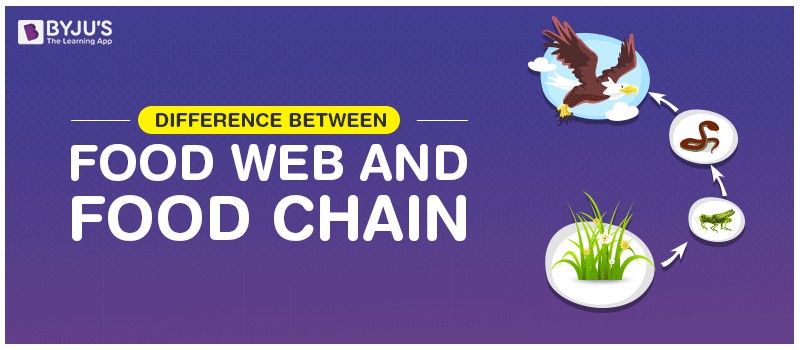Understanding how energy and nutrients flow through an ecosystem is crucial for grasping its overall health and stability. Two fundamental concepts in ecology are the food chain and the food web. While often used interchangeably, they represent distinct aspects of these intricate relationships. Let’s delve into the differences between a food chain and a food web.
A food chain illustrates a direct, linear pathway of energy and nutrient transfer from one organism to another. Imagine a simple sequence: grass to a grasshopper, the grasshopper to a frog, and finally the frog to a snake. Each organism occupies a specific trophic level. Primary producers like plants are at the base (trophic level 1), followed by herbivores (primary consumers), then carnivores (secondary consumers), and potentially apex predators at the top.
A food web, on the other hand, is a complex network representing the interconnectedness of multiple food chains within an ecosystem. It acknowledges that organisms rarely rely on a single food source and participate in various feeding relationships.
Key Differences Between Food Chain and Food Web
The following table highlights the key distinctions between food chains and food webs:
| Feature | Food Chain | Food Web |
|---|---|---|
| Structure | Linear, single pathway | Network of interconnected food chains |
| Complexity | Simple | Complex |
| Trophic Levels | Organisms feed on a single species at the level below | Organisms may feed on multiple species across various lower trophic levels |
| Stability | Less stable; disruption at one level can severely impact the chain | More stable; alternative food sources buffer the ecosystem against disruptions |
| Representation | Simplified view of energy flow | More realistic representation of feeding relationships in an ecosystem |
| Adaptability | Limited impact on organism adaptability and competitiveness | Influences organism adaptability and competitiveness by offering diverse food options |
 Food Chain vs Food Web Diagram
Food Chain vs Food Web Diagram
Alt text: Illustration comparing a simple food chain to a complex food web showing multiple interconnected feeding relationships between organisms.
Food Chain: A Step-by-Step Transfer
In a food chain, energy transfer is relatively straightforward. A primary producer, like a plant, captures energy from the sun through photosynthesis. A herbivore consumes the plant, obtaining some of that energy. The herbivore is then eaten by a carnivore, and so on. However, with each transfer, a significant amount of energy is lost as heat, limiting the length of most food chains. Because of this loss of energy, most food chains contain a maximum of four or five trophic levels.
For example, consider a simple aquatic food chain: phytoplankton → zooplankton → small fish → larger fish → seal. This chain shows the flow of energy from microscopic algae to a top predator.
Food Web: Interconnected Ecosystem
Food webs offer a more comprehensive view of ecosystem dynamics. They recognize that most organisms have diverse diets and are preyed upon by multiple species. This interconnectedness creates a complex web of interactions that contribute to ecosystem stability. The benefit of this complexity is that if one source of food diminishes, the consumer can seek other food options.
Alt text: A simplified food web showing interconnected relationships between aquatic organisms including plankton, fish, crabs, and seabirds.
Consider a grassland food web. Grasshoppers might eat grass, but they could also consume other plants. Frogs might eat grasshoppers, but also other insects. Snakes might prey on frogs, rodents, and even birds. This interconnectedness provides resilience to the ecosystem. If the grasshopper population declines due to disease, frogs can still feed on other insects, preventing a complete collapse of their population.
Food Chain vs. Food Web: Which is More Accurate?
While food chains are useful for illustrating basic energy transfer, they are simplifications of reality. Food webs provide a more accurate representation of the complex feeding relationships within an ecosystem. The complexity of a food web reflects the biodiversity and stability of an ecosystem. Ecosystems with diverse and intricate food webs tend to be more resilient to environmental changes and disturbances.
Understanding the Interplay
Both food chains and food webs are essential tools for understanding the flow of energy and nutrients within an ecosystem. While food chains provide a simplified, linear view, food webs offer a more complex and realistic representation of the intricate relationships between organisms. By studying these interactions, we can better understand the dynamics of ecosystems and the impact of human activities on the natural world. Understanding the difference between the two is vital to understanding the impact to an ecosystem should one aspect be disrupted or removed.